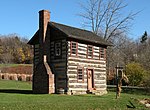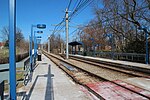TWA Flight 15A

TWA Flight 15A (TWA 15A), a Douglas DC-2 operated by Transcontinental and Western Air, crashed into a gully in Clifton, Pennsylvania, now Upper Saint Clair, a suburb approximately 7 miles (11 km) south of Pittsburgh. The crash occurred at approximately 6:40 p.m. Eastern Standard Time on March 25, 1937, killing all 13 passengers and crew members. Flight 15A was a regularly scheduled flight from Newark, New Jersey to Pittsburgh, Pennsylvania via Camden, New Jersey. This accident marked the third fatal crash of a commercial airliner in the Pittsburgh area within a single year's time. On April 7, 1936 TWA Flight 1, also a DC-2, crashed into Cheat Mountain south-east of Pittsburgh near Uniontown with 12 fatalities. On September 5, 1936 a Stinson 6000 tri-motor operating under the name Skyways crashed near Pittsburgh's Allegheny County airport while on a sightseeing flight, killing 9 of 10 onboard, including the pilot. Spared was the earliest known sole survivor of a commercial aviation accident.
Excerpt from the Wikipedia article TWA Flight 15A (License: CC BY-SA 3.0, Authors, Images).TWA Flight 15A
McMurray Road,
Geographical coordinates (GPS) Address Nearby Places Show on map
Geographical coordinates (GPS)
| Latitude | Longitude |
|---|---|
| N 40.33 ° | E -80.067222222222 ° |
Address
The Grand Residence at Upper St. Clair
McMurray Road
15241
Pennsylvania, United States
Open on Google Maps








